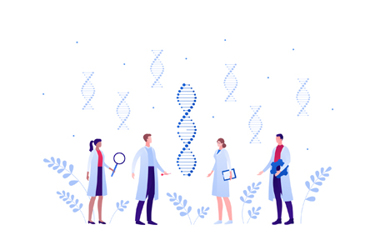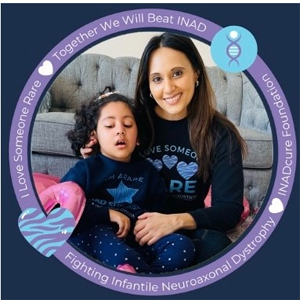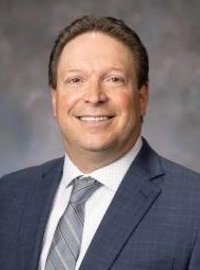A CDMO's Mission For The Pursuit Of Rare Diseases

By Louis Garguilo, Chief Editor, Outsourced Pharma

I understand why the INADcure Foundation, led by a cofounder and mother of a daughter with Infantile Neuroaxonal Dystrophy, selected its CDMO … but why would a CDMO select the foundation as a customer?
My overall discussion with that cofounder, Leena Panwala (please see: “A Mother Picks A CDMO To Advance Treatment For Her Daughter”), was riveting, but the question above rolled around the back of my mind.
The selection process has to work for both sides.
Some may not recognize the extensive factors entering the CDMO’s side of the equation.
 Sponsors looking to get “selected” by a CDMO you are pursuing should be ready to answer questions like these:
Sponsors looking to get “selected” by a CDMO you are pursuing should be ready to answer questions like these:
Economic
- Do you have funding for this project? Where does the funding originate? Is there enough (or other funding) should the project succeed to the next steps and phases of development and manufacture?
Cultural
- Who are you? What are your professional backgrounds? How involved (or not involved) will you want to be?
- CDMOs will try to assess: Do we like them as individuals? What is their work culture? Does it match ours?
Scientific
- What do we know about the candidate drug or therapy? How much data can you provide? What internal resources/facilities do you have?
- CDMOs will try to assess: Is the program feasible scientifically and technologically?
Project
- What are your specific goals for this project or an overall program? What are the exact deliverables (quantities; quality; milestones)?
This is not an exhaustive list.
Did INADcure answer these questions substantially enough that the CDMO, Andelyn Biosciences, agreed to take on its novel gene-therapy program for an ultra-rare disease nobody else in the industry was interested in pursuing?
I reached out to Andelyn to find out.
In fact, I had featured the CDMO in editorial a few years ago, focusing on the unique circumstance of its beginning: spun out of a hospital to create a gene-therapy service provider.
What I learned this time surprised me again. INADcure hadn’t offered Andelyn much to go on.
And that was just fine.
It’s What We Do
 I learned from Wade Macedone, recently appointed CEO (and former COO) for Andelyn, that theirs is a business model that allows the CDMO to serve programs for the rarest of rare diseases, and the parents and small organizations searching for help.
I learned from Wade Macedone, recently appointed CEO (and former COO) for Andelyn, that theirs is a business model that allows the CDMO to serve programs for the rarest of rare diseases, and the parents and small organizations searching for help.
As Andelyn was born out of Nationwide Children's Hospital, says Macedone, “it really doesn't matter in the end how many patients there are, or the risk profile of the disease itself.”
“We are focused on the underserved and ultra-rare disease patient populations. I honestly believe that on the ultra-rare and orphan -disease front, gene therapy thrives because the risk reward is there.”
I inquire about that “reward” for a CDMO.
Macedone replies Andelyn’s business model – perhaps mission is better description – survives on its “balance of customers.”
It starts with the weight of large biopharma organizations (with plenty of money) that Andelyn is also set up to serve.
“Ultimately,” he says, “established pharma and their programs for large indications are a foundation for us. Their programs, starting in the development range and moving through scale – our facility includes eight upstream rooms of 2000 liters – allows us to continue to move forward, build various capacity, and pursue our mission.”
“These other [big] customers allow us to put some of those profits aside to help out the smaller foundations focused on rare diseases. These profits go back into research and development to handle the capacity which allows us to support foundations like INADcure.”
Providing A Vector Of Hope
Of Andelyn's dedicating a percentage of capacity to help the underprivileged and underserved communities, Macedone says, “Our approach is proven, and fast.” He then elaborates:
“There's not a lot of development work or a lot of risk to the execution of these programs. The real risk is mostly around the clinics, and there's nobody better in the clinics than Nationwide Children's. So this is perfect to help someone like Leena and INADcure.
“To have a parent or a foundation approach us with an idea, and our ability to design a plasmid manufacturing pack relevant for the disease, starting at very small scale, and our support on the clinical side, is our mission.”
“It's something we've done for the last 20 years – Andelyn is the commercial for-profit spinoff from the hospital so it's part of our DNA, it's part of our name.
“I've been personally helping foundations bring for-profit diseases back to hospitals, back to nonprofits, because although they have good clinical relevance, they've been shelved because there's no revenue stream to it.”
But maybe there is after all.
Macedone sees a revenue stream for a lot of these patient-driven foundations within the FDA accelerated review system for rare diseases.
“BioMarin, for example, pursued rare and orphan diseases. They achieved priority review for some programs that were never going to a commercial product. It'll stay in the clinics to serve research, but they're able to fund the next round by selling off that priority review to a BMS, Pfizer, Lilly,” explains Macedone.
“Sarepta, for example, tackles a large systemic disease, and gets front seat for that first review and approval from the FDA, which means everything in pharma from an indication standpoint.”
“So it's not rare,” he adds, “for us to talk to a mom, dad, brother. Honestly they're the customers we love to serve.”
Let's conclude with this:
On some level (let’s hope), everyone involved in the biopharma industry has a sense of mission for what we are trying to accomplish each day – help each other bring drugs and therapies to those in need.
An “outsourcing” story like this should make us all feel good.
But this one isn’t quite complete. We’ll return one more time to the courageous and resourceful mother who got all this started.
